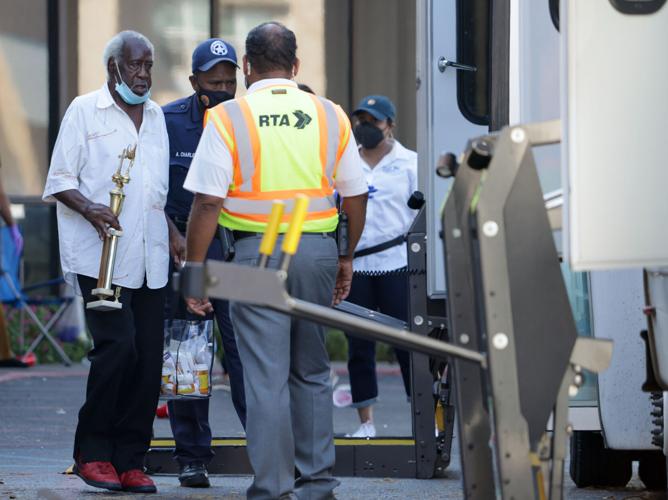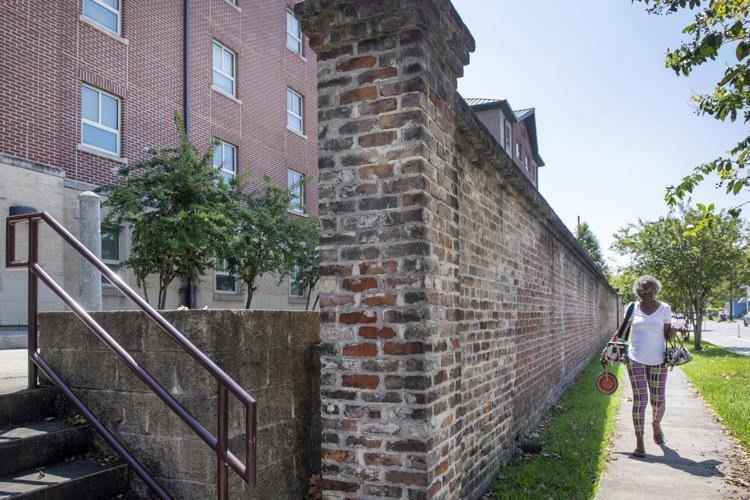The New Orleans City Council adopted new laws Thursday for independent living centers, to ensure the city’s most vulnerable residents have access to vital resources during disasters. The rules represent City Hall's response to the deaths of seven elderly residents during the Hurricane Ida blackout, but some advocates worry it does not address an underlying failure in New Orleans' disaster response: lack of provisions for shelter and transportation.
“Before, during and for at least five brutally hot days after Hurricane Ida, when the power was out citywide, neither evacuation nor a local shelter were available in New Orleans,” Martha Kegel, executive director of UNITY of Greater of New Orleans, told the council. “We have a very large population of low-income seniors and people with disabilities in our city. The overwhelming majority of them do not live in senior apartment buildings.”
Seven elderly people died after being left without power in sweltering apartments
Council member Kristin Gisleson Palmer, who pioneered the ordinance with Mayor LaToya Cantrell’s administration, promised it was only the first step in a more comprehensive effort to improve post-disaster procedures.
The administration's health director, Jennifer Avegno, said the rules are intended as a straightforward fix to foster better coordination between operators of independent living properties and city officials during disasters. Additional improvements are still being worked out, she said.
Avegno said the purpose is to ensure “that we know where our concentrations of vulnerable residents are.”
“Not necessarily that one person here or there, but concentrations of vulnerable individuals that really heightened what we saw this time,” she said.

Rose Brundage walks up to her St. Martin's Manor apartment in New Orleans on Thursday, Sept. 9, 2021, the day after City Hall declared it fit for habitation. City officials had evacuated 10 senior citizen apartment buildings on Friday and Saturday after finding residents suffering without power in the wake of Hurricane Ida.
For years, City Hall's emergency preparation plans have included outreach to independent living centers, including assistance with evacuating the largest buildings. The most recent version of the plan, completed just weeks before Ida struck Aug. 29, highlights the seven largest complexes, including estimates of how many residents they house.
City officials shut down six of those after Ida, upon discovering that residents had been left with limited access to food, water and backup power for oxygen tanks and dialysis machines. Building managers, with no duty of care to residents, had fled their posts in advance of the storm without coordinating plans for the immediate aftermath.
Although city officials acted quickly to shut down a total of 10 properties where residents were considered trapped in life-threatening situations, a special needs shelter and buses to shelters elsewhere in the state were not provided until six days after the storm.
When Larry Tyler gathered with other residents outside of the Flint-Goodridge Apartments for seniors in Central City on Friday, he saw somethi…
The new ordinance creates a licensing regime for a new residential classification that is separate from nursing homes. To obtain the license, operators of independent living centers must coordinate emergency plans with city officials and maintain on-site personnel and a detailed tenant census during disasters.
Kegel, whose organization provides services for homeless people, said in an interview that she understood “we are all a little rusty” when it comes to post-storm evacuations, because it had been more than a decade since New Orleans faced a hurricane threat comparable to Ida.
She said she hopes to work with the Cantrell administration on improving procedures.

Martha Kegel, photographed in 2015, told the New Orleans City Council on Thursday, Oct. 21, 2015, that more can be done to care for senior citizens during disasters.
“Ida showed us that our commitment as a community to taking care of people who can’t evacuate themselves is really frayed,” Kegel said. “It’s just really missing the mark of what the real problem was, and it’s just focusing on a relatively few buildings.”
Kegel was initially concerned with a draft ordinance covering any residential complex that houses “persons receiving permanent housing services.” The draft also allowed the City Hall to bill operators for city-assisted evacuations.
That would have squeezed landlords with whom UNITY works to house people who would otherwise be on the streets, ultimately jeopardizing the supply of housing, Kegel told the council. For these properties, UNITY’s case management services already fulfill most of the new requirements, she said.
A series of late amendments scrapped the billing allowance and refined the supportive housing provision to restrict eligibility to complexes where most residents receive support. While there are hundreds of complexes with individual tenants receiving support services, only a handful meet the criteria passed Thursday, Kegel said.
The amendments placated most of Kegel’s concerns about alienating landlords. But she and her staff worry the ordinance will do little to help the residents they support, not to mention thousands of other vulnerable residents.
“It focuses on our communication with the Health Department, and with the city, but it doesn’t commit the city to doing anything in particular with that information,” said Heather Searles, director of UNITY’s supportive housing program.






